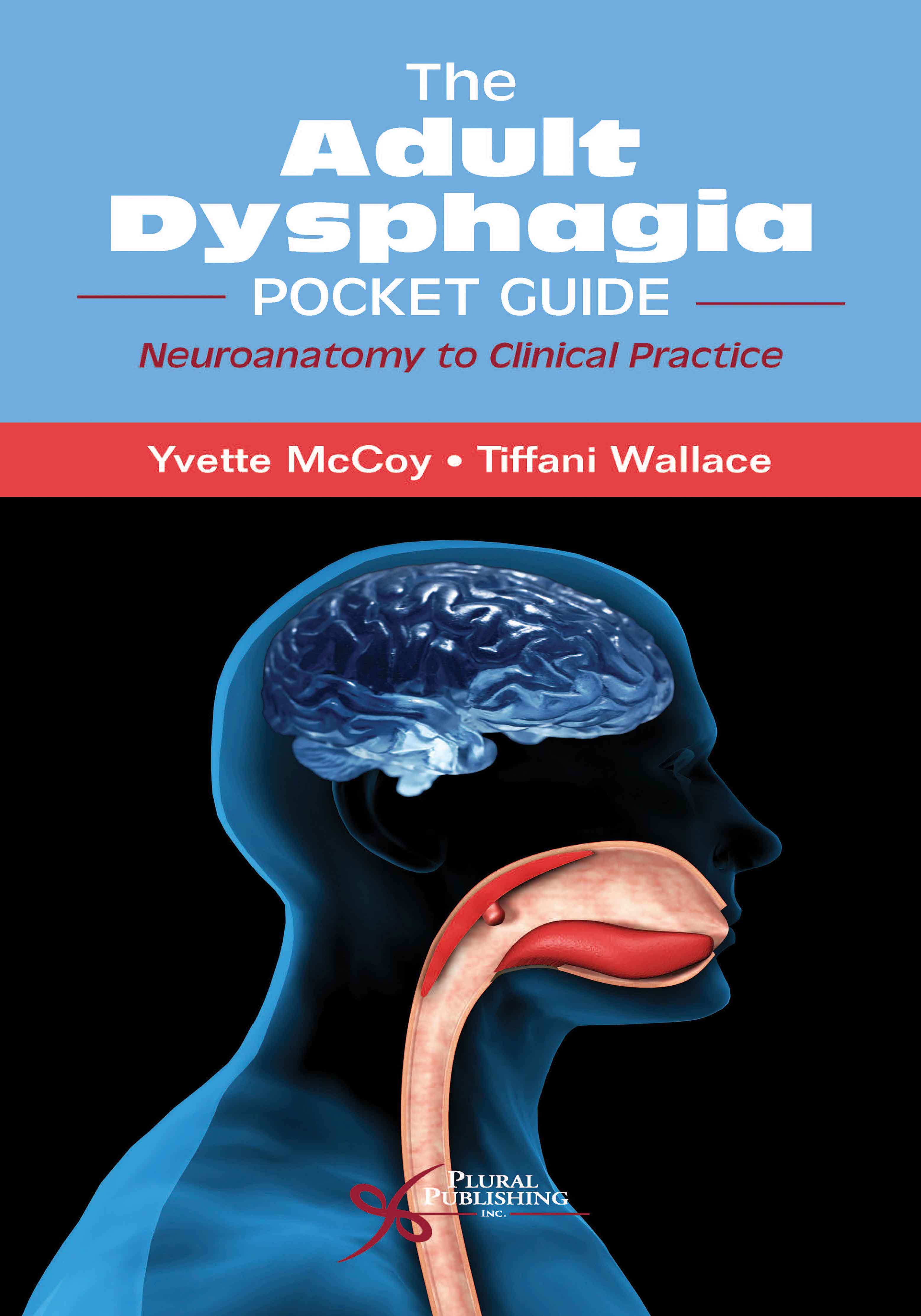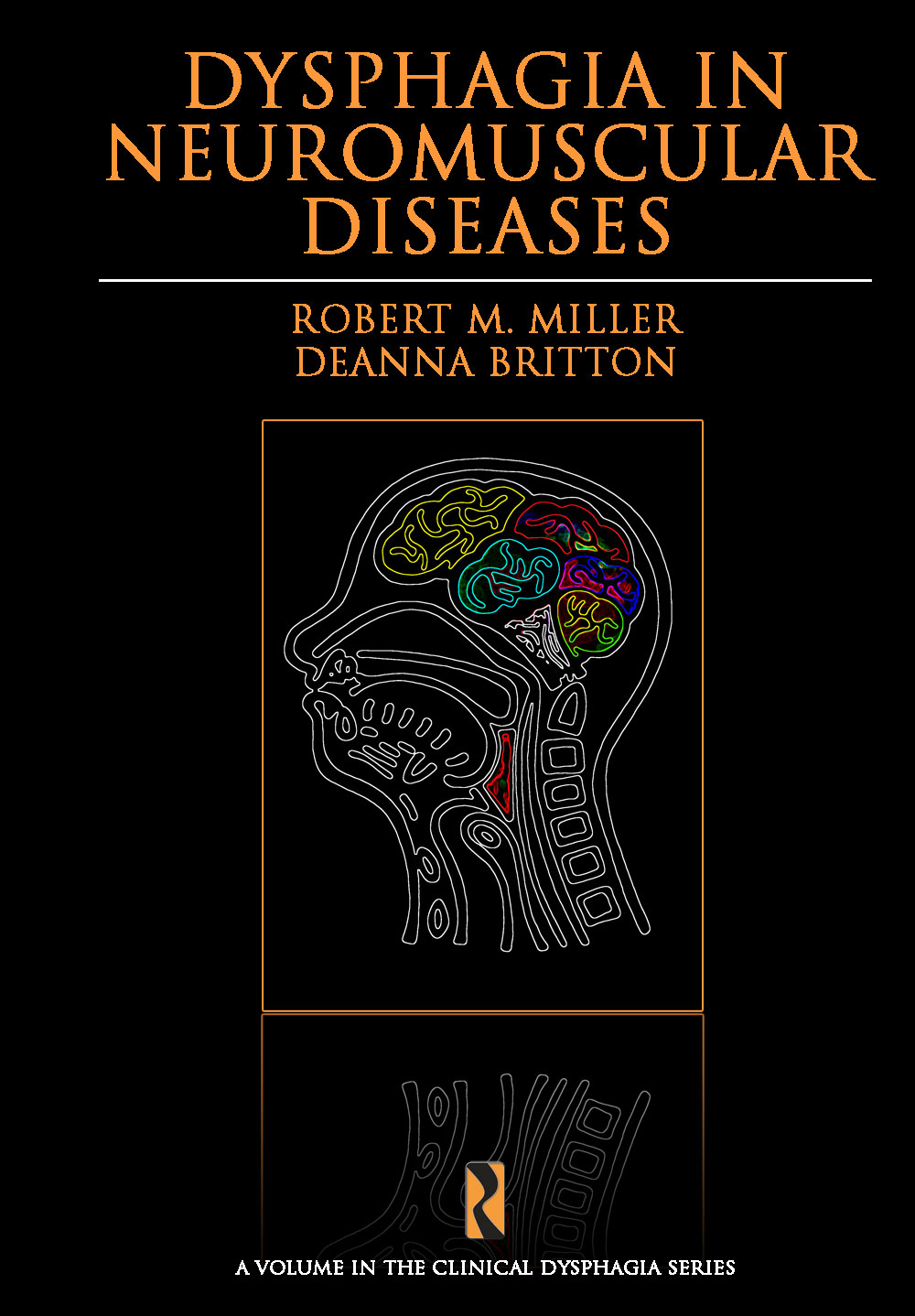
Assessment of Dysphagia in Adults: Resources and Protocols in English and Spanish
First Edition
Maria H. Provencio-Arambula, Dora Provencio, M.N. Hegde
Details: 352 pages, 2-Color, Softcover Layflat, 8.5" x 11"
ISBN13: 978-1-59756-095-5
© 2007 | Available
For Instructors
Purchase
This book introduces background information and procedural overviews needed to assess swallowing disorders in adults in addition to offering detailed protocols for administering the assessment. The majority of protocols in this book are provided in both English and Spanish, allowing clinicians to effectively and efficiently assess swallowing disorders in a wide variety of patients, including those speaking Spanish.
Also by these authors: "Treatment of Dysphagia in Adults. Resources and Protocols: A Bilingual Manual" follows the same format and serves as a companion volume.
Review
"The in-depth protocols cover a wide range of dysphagia treatment and management.... The authors' decision to include both English and Spanish protocols is incredibly helpful, and a unique addition."
—Amanda McAdoo, BA, George Washington University, Doody's Review Service (2008)
- Preface.
- Introduction to the Dysphagia Assessment Resources and Protocols.
- Introduction to Feeding and Swallowing.
- Normal Swallow.
- Assessment of Swallowing.
- Screening for Swallowing Problems.
- Protocols for the Preparatory Evaluation.
- History of the Patient and the Swallowing Problems.
- Materials Needed for Preparatory Evaluation.
- Protocols for the Clinical Swallowing Evaluation.
- Orofacial Examination.
- Clinical Swallow Examination.
- The Swallowing Examination Protocol.
- Communicating the Assessment Results.
- Diet Recommendations.
- General Guidelines for Diet Modification.
- Nonoral Feeding Options.
- Recommendations for Treatment.
- Assessment Resources for Patients, Nursing Staff, and Postings.
- The Artificial Airway.
- Modified Barium Videofluoroscopic Swallow Study.
- Overview of Selected Instrumental Evaluation Procedures.
- English/Spanish Glossary.
- References.
- Index.
DVD Contents:
Chapter 1
- Assessment Resource 1.1a (English)- Causes of Feeding Difficulties
- Assessment Resource 1.1b (Spanish)- Causas de Dificultades para Tragar
- Assessment Resources 1.2a (English)- Difficulty Swallowing
- Assessment Resource 1.2b (Spanish)- Dificultad de Tragar
Chapter 2
- Assessment Resource 2.1a (English)- Understaind the Mechanics of Swallowing: The Mouth
- Assessment Resource 2.1b (Spanish)- Entendiendo la Mecanica del Tragar: La Boca
- Assessment Resource 2.2a (English)- Understanding the Mechanics of Swallowing: The Throat
- Assessment Resource 2.2b (Spanish)- Entendiendo la Mecanica del Tragar: La Garganta
- Assessment Resource 2.3a (English)- Understanding the Mechanics of Swallowing: The Esophagus
- Assessment Resource 2.3b (Spanish)- Entendiendo la Mecanica del Tragar: El Esofago
Chapter 3
- Assessment Protocol 3.1a (English)- Screening for Swallowing Problems
- Assessment Protocol 3.1b (Spanish)- Investigación para los Problemas de Tragar
- Assessment Protocol 3.2a (English)- Medical Chart Review
- Assessment Protocol 3.2b (Spanish)- Revisión de la Carta Médica
- Assessment Protocol 3.3a (English)- Nursing Staff Interview
- Assessment Protocol 3.3b (Spanish)- Entrevista de la Enfermera
- Assessment Protocol 3.4a (English)- Patient's History
- Assessment Protocol 3.4b (Spanish) - Historia del Paciente
- Assessment Protocol 3.5a (English)- Assessment of the Patient's Current Status
- Assessment Protocol 3.5b (Spanish)- Evaluación del Estado Actual del Paciente
- Assessment Protocol 3.6a (English)- Materials Needed for Preparatory Evaluation
- Assessment Protocol 3.6b (Spanish)- Materiales Necesitados para la Evaluación Preparatoria
- Assessment Protocol 3.7a (English)- Reflex Assessment
- Assessment Protocol 3.7a (English)- Reflex Assessment
- Assessment Protocol 3.8a (English)- Examination of the Oral Structures
- Assessment Protocol 3.8b (Spanish)- Examinación de las Estructuras Orales
- Assessment Protocol 3.9 (English/Spanish)- Detailed Clinical Swallow Examination Patient Instructions
- Assessment Protocol 3.10 (English/Spanish)- Detailed Clinical Swallow Examination Using
Regular Liquids - Assessment Protocol 3.11 (English/Spanish)- Detailed Clinical Swallow Examination Using Nectar-Thickened Liquids
- Assessment Protocol 3.12 (English/Spanish)- Detailed Clinical Swallow Examination Using
Honey-Thickened Liquids - Assessment Protocol 3.13 (English/Spanish)- Detailed Clinical Swallow Examination Using
Pudding-Thickened Liquids - Assessment Protocol 3.14 (English/Spanish)- Detailed Clinical Swallow Examination Using
Pureed-Food - Assessment Protocol 3.15 (English/Spanish)- Detailed Clinical Swallow Examination Using
Fine Ground Food - Assessment Protocol 3.16 (English/Spanish)- Detailed Clinical Swallow Examination Using
Mechanical Soft Food - Assessment Protocol 3.17 (English/Spanish)- Detailed Clinical Swallow Examination Using
Regular Food - Assessment Protocol 3.18a (English)- Clinical Swallow Examination Form
- Assessment Protocol 3.18b (Spanish)- Forma del Examen Clínico del Tragar
Chapter 4
- Assessment Protocol 4.1 (English/Spanish)
Chapter 5
- Assessment Protocol 5.1 (English/Spanish)
- Assessment Protocol 5.2 (English/Spanish)
- Assessment Protocol 5.3 (English/Spanish)
- Assessment Protocol 5.4 (English/Spanish)
- Assessment Protocol 5.5 (English/Spanish)
- Assessment Protocol 5.6 (English/Spanish)
- Assessment Protocol 5.7 (English/Spanish)
Chapter 8
- Assessment Resource 8.1a (English)- Signs and Symptoms of Dysphagia
- Assessment Resource 8.1b (Spanish)- Síntomas de Disfagia
- Assessment Resource 8.2a (English)- Dysphagia Precautions
- Assessment Resource 8.2b (Spanish)- Precauciones de Disfagia
- Assessment Resource 8.3a (English)- Choking Precautions
- Assessment Resource 8.3b (Spanish)- Precauciones de Ahogo
- Assessment Resource 8.4a (English)- Choking on Pills or Medications
- Assessment Resource 8.4b (Spanish)- Ahogo con Pastillas o Medicaciones
- Assessment Resource 8.5a (English)- NPO
- Assessment Resource 8.5b (Spanish)- NPO
- Assessment Resource 8.6a (English)- Patient Environment at Mealtimes
- Assessment Resource 8.6b (Spanish)- El Ambiente del Paciente a la Hora de Comer
- Assessment Resource 8.7a (English)- Patient Position During Mealtimes
- Assessment Resource 8.7b (Spanish)- Posición del Paciente Durante la Hora de Comer
- Assessment Resource 8.8a (English)- Patient Position Following Each Meal
- Assessment Resource 8.8b (Spanish)- Posición del Paciente Despues de Cada Comida
- Assessment Resource 8.9a (English)- Patient's Head Position During Mealtimes
- Assessment Resource 8.9b (Spanish)- Posición de la Cabeza del Paciente Durante la Hora de Comer
- Assessment Resource 8.10a (English)- Patient's Foot Position During Mealtimes
- Assessment Resource 8.10b (Spanish)- Posicion de los Pies del Paciente Durante la Hora de Comer
- Assessment Resource 8.11a (English)- Checklist for Patient's Head Position During Mealtimes
- Assessment Resource 8.11b (Spanish)- Lista de Marcar la Posición de la Cabeza del Paciente
Durante la Hora de La Comida - Assessment Resource 8.12a (English)- Clinician's Checklist for Patient's General Position
- Assessment Resource 8.12b (Spanish)- Lista de Marcar del Clínico para la Posición General del Paciente
- Assessment Resource 8.13a (English)- Liquid Consistency
- Assessment Resource 8.13b (Spanish)- Consistencia de Líquidos
- Assessment Resource 8.14a (English)- Diet Consistency
- Assessment Resource 8.14b (Spanish)- Consistencia de Dieta
- Assessment Resource 8.15a (English)- Safe Swallowing Instruction 1
- Assessment Resource 8.15b (Spanish)- Instrucción para Tragar con Seguridad 1
- Assessment Resource 8.16a (English)- Safe Swallowing Instruction 2
- Assessment Resource 8.16b (Spanish)- Instrucción para Tragar con Seguridad 2
- Assessment Resource 8.17a (English)- Safe Swallowing Instruction 3
- Assessment Resource 8.17b (Spanish)- Instrucción para Tragar con Seguridad 3
- Assessment Resource 8.18a (English)- Safe Swallowing Instruction 4
- Assessment Resource 8.18b (Spanish)- Instrucción para Tragar con Seguridad 4
- Assessment Resource 8.19a (English)- Safe Swallowing Instruction 5
- Assessment Resource 8.19b (Spanish)- Instrucción para Tragar con Seguridad 5
- Assessment Resource 8.20a (English)- Safe Swallowing Instruction 6
- Assessment Resource 8.20b (Spanish)- Instrucción para Tragar con Seguridad 6
- Assessment Resource 8.21a (English)- Safe Swallowing Instruction 7
- Assessment Resource 8.21b (Spanish)- Instrucción para Tragar con Seguridad 7
- Assessment Resource 8.22a (English)- Chewing Problems and Solutions
- Assessment Resource 8.22b (Spanish)- Problemas de Masticar y las Soluciones
- Assessment Resource 8.23a (English)- Food Management Problems
- Assessment Resource 8.23b (Spanish)- Problemas Manejando la Comida
- Assessment Resource 8.24a (English)- Difficulty Removing Food from Utensils
- Assessment Resource 8.24b (Spanish)- Dificultad Quitando la Comida de los Utensilios
- Assessment Resource 8.25a (English)- Difficulty with Food Sticking to Roof of Mouth
- Assessment Resource 8.25b (Spanish)- Dificultad con la Comida que se Pega en el Paladar
- Assessment Resource 8.26a (English)- Holding Food Inside the Mouth
- Assessment Resource 8.26b (Spanish)- Reteniendo la Comida en la Boca
- Assessment Resource 8.27a (English)- Food Is Falling Outside the Patient's Mouth
- Assessment Resource 8.27b (Spanish)- Comida Que se Sale de la Boca
- Assessment Resource 8.28a (English)- The Patient Will Not Open The Mouth
- Assessment Resource 8.28b (Spanish)- El Paciente Que no Abre la Boca
- Assessment Resource 8.29a (English)- The Patient with a Bite Reflex
- Assessment Resource 8.29b (Spanish)- El Paciente con el Reflejo de Morder
Chapter 9
- Assessment Protocol 9.1a (English)- Medical Chart Review for the Patient with a Tracheostomy
- Assessment Protocol 9.1b (Spanish)- Revisión de la Carta Medica para el Paciente con Tubo de Traqueostomía
- Assessment Protocol 9.2 (English/Spanish)- Detailed Modified Evans Blue Dye Test: Examination Instructions
- Assessment Protocol 9.3 (English/Spanish)- Detailed Modified Evans Blue Dye Test Using PureedConsistency Food
- Assessment Protocol 9.4 (English/Spanish)- Detailed Modified Evans Blue Dye Test Using Pudding-Thickened Liquids
- Assessment Protocol 9.5 (English/Spanish)- Detailed Modified Evans Blue Dye Test Using Honey-Thickened Liquids
- Assessment Protocol 9.6 (English/Spanish)- Detailed Modified Evans Blue Dye Test Using Nectar-Thickened Liquids
- Assessment Protocol 9.7 (English/Spanish)- Detailed Modified Evans Blue Dye Test Using Regular Liquids
- Assessment Protocol 9.8 (English/Spanish)- Detailed Modified Evans Blue Dye Test Using Finely Ground Foods
- Assessment Protocol 9.9 (English/Spanish)- Detailed Modified Evans Blue Dye Test Using Mechanical Soft Food
- Assessment Protocol 9.10 (English/Spanish)- Detailed Modified Evans Blue Dye Test Using Regular Food
Chapter 10
- Assessment Protocol 10.1 (English/Spanish)- Detailed MBVSS Examination Instructions
- Assessment Resource 10.1a (English)- Patient Appointment Notification Form
- Assessment Protocol 10.2 (English/Spanish)- Detailed MBVSS Examination Using Barium to H2O Consistency
- Assessment Protocol 10.3 (English/Spanish)- Detailed MBVSS Examination Using Barium to Nectar Consistency
- Assessment Protocol 10.4 (English/Spanish)- Detailed MBVSS Examination Using Barium to Honey Consistency
- Assessment Protocol 10.5 (English/Spanish)- Detailed MBVSS Examination Using Barium with Pudding Consistency
- Assessment Protocol 10.6 (English/Spanish)- Detailed MBVSS Examination Using Barium with Pureed Food Consistency
- Assessment Protocol 10.7 (English/Spanish)- Detailed MBVSS Examination Using Barium with Mechanical Soft Consistency Food
- Assessment Protocol 10.8 (English/Spanish)- Detailed MBVSS Examination Using Barium on Regular-Consistency Food
- Assessment Protocol 10.9a (English)- Modified Barium Videofluoroscopic Swallow Examination Form
- Assessment Protocol 10.10 (English/Spanish)- Communicating the MBVSS Results
- Assessment Protocol 10.11a (English)- Additional Recommendations Based on MBVSS Results
- Assessment Resource 10.1b (Spanish)- Forma de Notificación del Paciente

The Adult Dysphagia Pocket Guide: Neuroanatomy to Clinical Practice.
First Edition
Yvette M. McCoy, Tiffani Wallace
Details: 222 pages, B&W, Softcover, 4.5" x 8"
ISBN13: 978-1-63550-091-2
© 2019 | Available

Dysphagia Following Stroke
Third Edition
Stephanie K. Daniels, Maggie-Lee Huckabee, Kristin Gozdzikowska
Details: 500 pages, B&W, Softcover, 6" x 9"
ISBN13: 978-1-63550-030-1
© 2019 | Available

Dysphagia in Neuromuscular Diseases
First Edition
Robert M. Miller, Deanna Britton
Details: 250 pages, B&W, Softcover, 7" x 10"
ISBN13: 978-1-59756-369-7
© 2011 | Available

Dysphagia Post Trauma
First Edition
Elizabeth C. Ward, Angela T. Morgan
Details: 264 pages, B&W, Softcover, 7" x 10"
ISBN13: 978-1-59756-236-2
© 2009 | Available

Dysphagia in Movement Disorders
Harrison Jones, John C. Rosenbek
Details: 275 pages, B&W, Softcover, 7" x 10"
ISBN13: 978-1-59756-228-7
© 2009 | Available

Treatment of Dysphagia in Adults: Resources and Protocols in English and Spanish
First Edition
Maria H. Provencio-Arambula, Dora Provencio, M.N. Hegde
Details: 331 pages, 2-Color, Softcover Layflat, 8.5" x 11"
ISBN13: 978-1-59756-096-2
© 2007 | Available
